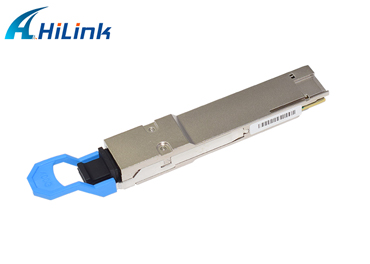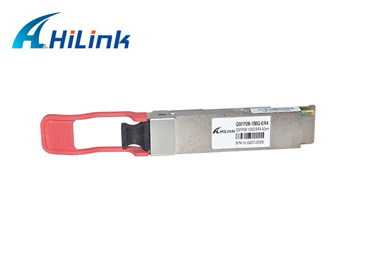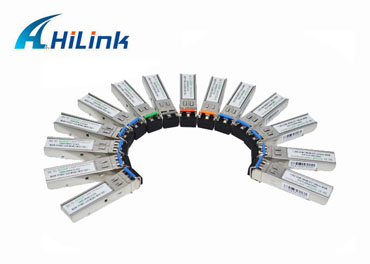What Are the Classifications of Optical Modules?
Feb. 08, 2023
An optical and electro-optical conversion optical module is an optoelectronic device. The transmitter side of an optical module converts electrical signals into optical signals, while the receiver side converts the optical signals back into electrical signals. The optoelectronic device, the functional circuitry and the optical interface make up the system. Optical devices have two parts: transmit and receive. SFP, sfp+, staff, gigabit ethernet interface converters (gbic) and other optical modules are classified according to their package type.
What is the role of optical modules?
Optical modules perform the transmission and reception of data in optical communications.
1. The optical module performs the electrical/optical conversion on the transmitter side.
2. The light travels through the optical fibre.
3. The optical module performs the optical/electrical conversion at the receiving end.
Hilink 400G-QSFP-DD DR4 Optical Module
What are the classifications of optical modules?
By function
Optical receive, optical transmit, optical transceiver and optical forwarding modules are just a few examples.
The main function of an integrated optical transceiver module is to perform photoelectric/electro-optical conversion, including optical power control, modulation transmission, signal detection, IV conversion, limit amplification judgement regeneration, as well as functions such as anti-counterfeit information enquiry, TX-disable, etc. SFP, SFF, SFP+, GBIC, XFP, 1x9, etc.
Optical forwarding modules include a number of signal processing tasks such as MUX/DEMUX, CDR, function control, energy harvesting, monitoring, etc. In addition to optical conversion, 200/300pin, XENPAK, and X2/XPAK are examples of common optical forwarding modules.
The term "optical module" or "optical module" refers to an integrated optical transceiver module, which is the English name for a "transceiver". It is an important part of the fibre optic communication infrastructure.
100G 40KM QSFP28 ER4
Depending on the parameters
Pluggability: hot-swappable and non-hot-swappable
Package forms: SFP, GBIC, XFP, Xenpak, X2, 1X9, SFF, 200/3000pin, XPAK.
Transmission rates: Transmission rates are measured in megabits per second (MB/s) or gigabits per second (GB/s). The optical module range covers the following main rates: Low Rate, 100M, Gigabit, 2.5G, 4.25G, 4.9G, 6G, 8G, 10G, 40G.
Depending on the package
1. XFP (10 Gigabit Small Form Factor Pluggable) optical transceiver is a hot-swappable, protocol independent optical transceiver for 10G bps Ethernet, SONET/SDH and Fibre Channel.
2. SFP (small pluggable receiving and light-emitting module), currently the most widely used.
3. GigacBiDi series single-fibre bi-directional optical modules use WDM technology to achieve bi-directional information transmission (point-to-point transmission) on optical fibres. SFP single-fiber bi-directional (BiDi), GBIC single-fiber bi-directional (BiDi), SFP+ single-fiber bi-directional (BiDi), XFP single-fiber bi-directional (BiDi), SFF single-fiber bi-directional (BiDi), SFP+ single-fiber bi-directional (BiDi) are all examples of GigacBiDi.
Dual Fiber 155m 4.25g SFP Transceivers
4. Small pluggable RJ45 electrical port modules, also known as electrical port modules or electrical port modules.
5. SFF is divided into 2x5, 2x10, etc. according to the number of pins.
6. Gigabit Ethernet Interface Converter (GBIC) module
7. Passive optical network PON (A-PON, G-PON, GE-PON) optical modules
8. 40Gbs high-speed optical module.
9. SDH transmission modules (OC3, OC12, OC48)
10. Storage modules, such as 4G, 8G, etc.
Read More: How to Choose SFP Transceivers?














